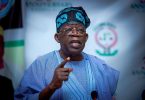BY MONICA MADUEKWE
In stark contrast to the Western position of 2021, stood that of the Organization of the Petroleum Exporting Countries (OPEC). Referring to the OPEC World Oil Outlook 2021, the then Secretary General emphasized the significance of investment to ensure energy supply security, noting that an investment of $11.8 trillion is necessary until 2045 across oil’s upstream, midstream, and downstream sectors to meet rising energy demands.
Nevertheless, at COP26, Nigeria, Africa’s largest oil producer, distanced herself from oil with the statement, “Nigeria is actually more of a gas than an oil producing country”, as stated by former President Muhammadu Buhari during his address at COP26. Moreover, during the same COP26 speech, upon launching the Energy Transition Plan, he announced that Nigeria would achieve net-zero emissions by 2060, aligning with China’s target year and a decade after some of the world’s most advanced economies pledged to achieve net-zero emissions by 2050.
Additionally, in the Nigeria Climate Change Act signed in that same year (2021), the country set the final date for reaching net-zero emissions at 2070, an extension of ten years from the ETP’s declared goal. Coincidentally, this aligns with India’s net-zero emissions deadline. Hence, Nigeria has established two distinct deadlines for the same objective. Based on Nigeria’s responses to the events of 2021, one can infer that Nigeria’s foreign policy on global climate politics is one of align, align, align, an accommodating foreign policy
An accommodating foreign policy may seem prudent and even necessary, particularly for a country like Nigeria that aims to cultivate strong relationships with Western nations and others for trade, investment, and financing. For instance, echoing China’s approach might have helped evade opposition on the global political stage. After all, if a major country like China cannot meet the 2050 global target, why should anyone expect more from us – a developing nation?
However, when these favorable declarations are made on the global stage, the country must uphold them to maintain its standing in the good graces of the very nations it sought to appease in the first place. If these promising declarations were never feasible (or even intended to be), then the country could find itself caught between a rock and a hard place.
Our accommodating foreign policy on global climate politics takes the form of declarations aligning with the West, followed by requests for financing from the West to realize these goals. While these tactics are logical, they possess limitations. The resultant negotiations may yield short-term benefits, if any, but they are unlikely to lead to a trajectory that fosters profound economic transformation and development.
It is important to emphasize that for developing countries like Nigeria to truly revolutionize their economies and uplift millions from poverty, a heightened level of energy and material consumption is essential. This reality would inevitably result in increased emissions. Even in a hypothetical scenario where exclusively renewable energy is employed for these purposes, emissions would still need to rise. This is due to Nigeria’s existing baseline – its current structural and socio-economic status.
To illustrate, emission reduction targets hinge on Integrated Assessment Models that intertwine socioeconomic, energy, and environmental factors. Developed nations typically employ their own national Integrated Assessment Models. The net-zero emissions target date is normally established by an Integrated Assessment Models encompassing variables like population, economic activities, and energy consumption for instance.
For the sake of simplification:
1) Regarding population: the model assumes a plateau and subsequent decline. A smaller population consumes less energy.
2) Concerning economic activities: The model takes into account several factors for the transport sector, including reduced travel and a decrease in private car ownership (substituted by public transportation, etc.). Additionally, the model considers the adoption of more fuel-efficient vehicles and other relevant assumptions. Furthermore, the decreased population size contributes to a reduction in transport sector activity, leading to decreased energy consumption. The model also anticipates a shift in the balance between industrial/manufacturing and services, given that the latter generally consumes less energy.
Moreover, the model factors in an increased contribution from high-tech industries, leveraging technological advancements to boost productivity, thus achieving higher output with fewer personnel. In such cases where population declines while output grows, the economy is able to witness a high GDP per capita.
3) On energy consumption: having reduced the main underlying drivers of energy consumption, the model will consider that carbon intensive fuels are replaced with less carbon intensive fuels. For instance, the model assumes the substitution of electricity for fossil fuels in various applications such as cooking, transportation (electric vehicles), and powering industries, commercial spaces, and residences. Additionally, the model presupposes a predominant reliance on renewable energy sources for electricity generation, encompassing hydro, biomass, solar, wind, geothermal, and ocean energy where available.
To facilitate the integration of intermittent renewables like solar and wind, the model necessitates an increased share of renewables as the baseload energy source. Accompanying measures include the implementation of battery storage and other storage solutions, grid interconnections (cross-border electricity purchase), and other related strategies to ensure a stable and resilient energy supply.
Indicators utilized by the modeler will be continuously refined to attain the desired target. Consider Group A countries where the starting point is already advantageous – implying a declining or stabilized population, widespread electricity usage, and favorable conditions for incorporating intermittent renewables.
These economies may be advanced, with manufacturing’s contribution to GDP falling (resulting in lower energy consumption in that sector) compared to the service industry, among other factors. As a result, the modeler can employ more pragmatic and less excessively ambitious assumptions in such scenarios.
However, in contrasting scenarios, which we can designate as Group B, dynamics move in the opposite direction. For instance, the population is on the rise, necessitating increased industrial/manufacturing activities relative to services.
The grid’s stability may hinder the expansion of solar and wind power, with incomplete grid coverage and a substantial portion of the population lacking electricity access. In Group B situations aiming to achieve the same target date as Group A, the modeler is likely to rely on overly ambitious assumptions regarding population decline, adopt unfavorable assumptions about economic activities, and consider unrealistic conditions for expanding renewable energy consumption.
Given Nigeria’s various net-zero emissions deadlines, it becomes challenging to assert that these targets stem from a single Integrated Assessment Models for the country.
Furthermore, contemplating Nigeria’s baseline inevitably prompts questions about the assumptions underpinning these targets and their potential alignment with a trajectory conducive to profound economic transformation within the country. What adds to the unease is the possibility that if these factors indeed contain flaws, they could substantially shape Nigeria’s negotiations with international partners in the foreseeable future – unless corrective measures are undertaken.
Given Nigeria’s significance both continentally and globally, there will undoubtedly be substantial interest from foreign partners seeking collaboration, including providing technical assistance and more.
The onus rests upon Nigeria to adeptly manage these relationships, yielding optimal long-term outcomes for the country. Nigeria boasts an impressive repository of studies and long-range action plans. However, as demonstrated above, certain plans display contradictory timelines and forecasts, raising concerns about the precision of underlying assumptions.
The true hazards arise when such plans find their way into global commitments that cater to short-term interests, potentially obstructing the attainment of profound long-term economic transformation due to their lack of practicality.
As explained earlier, embracing Nigeria’s unique path, similar to marching to the beat of her own drum, necessitates comprehensive long-term strategies and thorough planning that are grounder in the country’s realities and can stand the test of time. Specifically, this endeavor calls for the deep institutionalization of an energy, economy, and environment model within the purview of the country’s statistical authority.
This entity would bear the responsibility of diligently tracking and managing the model over the long term, thereby providing a transparent foundation for Nigeria to successfully transition away from her accommodating foreign policy stance in the area of global climate politics.
READ ALSO: Bakassi IDPs: Natives struggling with us for
In conclusion, the global events of 2021 offer valuable lessons. The adage that history repeats may prove true in this instance. The occurrences of 2021 unveiled fractures between the Global North and Global South on climate and energy matters. For instance, S&P Global Commodity Insights on March 31, 2022, reported that “OPEC will no longer use the International Energy Agency as a source of data on its members’ crude output, after a vote of the producer bloc’s ministers March 31, as relations between the two bodies have rapidly deteriorated over climate policies and energy supplies”.
Subsequently, the International Energy Agency, initially established to safeguard the interests of advanced economies and industrialized nations reliant on oil consumption, welcomed two new sub-Saharan African countries – Senegal and Kenya – both developing countries, as Association Countries.
This is in addition to South Africa, the most industrialized nation on the continent. This announcement on June 22, 2023, serves as a testament to the seismic shifts unfolding beneath the surface and it is indeed relevant to global climate politics. Starting now, Nigeria must choose to be proactive rather than reactive to avoid a return to her accommodating foreign policy stance on global climate politics, as was evident in 2021.
*Maduekwe, founder of PUTTRU, is a sustainable energy specialist and writes from Cape Verde.








Leave a Comment
You must be logged in to post a comment.